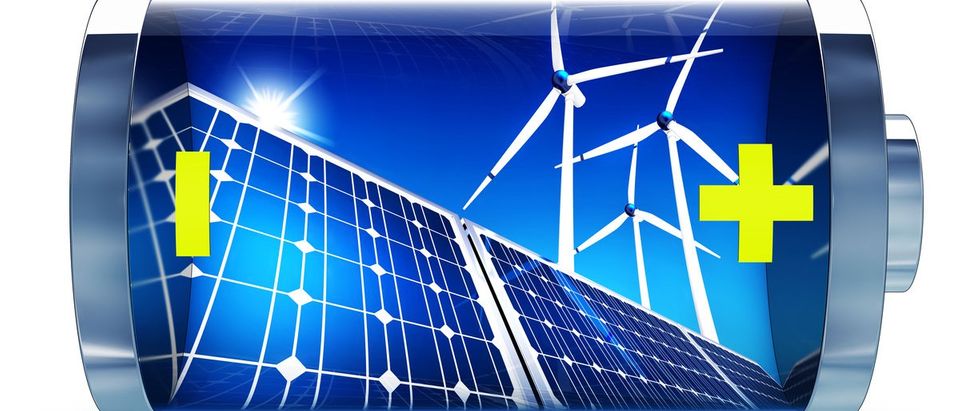Lithium prices have more than doubled in the last year, and that’s a major problem for anyone planning to build lithium-ion batteries to back up wind and solar power.
A vital resource for batteries, environmentalists want to see Lithium used to offset the variability of wind turbines and solar panels. Lithium-ion batteries are also used in electric cars.
Twitter users posted a chart from The Economist showing that the cost of buying lithium is soaring, complicating plans to expand green energy applications.
For those who think batteries are going to save us … the price of lithium has gone thru the roof since gigafactory started buying. https://t.co/IAXLAHqkJj
— Keith Pickering (@KeithAPickering) January 8, 2017
If government policies promoting green energy continue, lithium prices will continue to soar, making the energy storage necessary to back up wind and solar power even more expensive. Even with cheaper lithium, it is currently impossible to economically store power for times when the sun isn’t shining and the wind isn’t blowing.
High lithium prices are part of the reason that purchasing enough batteries to provide just three days of storage for an average American household costs about $15,000, and those batteries only lasts for about five years and are very difficult to recycle.
A Tesla Powerwall capable of powering a home costs $7,340 to buy, but a conservative analysis estimates a Powerwall can save its owner a maximum of $1.06 a day. An Elon Musk Tesla Powerwall battery would take almost 40 years, or roughly four times its warranty period, to pay for itself, according to analysis performed by the free market Institute for Energy Research. Tesla only offers five to 10 year warranties for its Powerwalls, and predicts they will last for only 15 years.
Batteries don’t work well enough to support solar or wind power in a cost-effective manner, according to research published by Belgian scientists from the Université libre de Bruxelles.
The scientists analyzed data from local energy suppliers, ran it through computer simulations and found it isn’t possible for homes to generate most of their own electricity from solar power and store it in batteries. Researchers determined that the short lifetime of the batteries and high prices — as well as fundamental problems — will likely prevent solar power from ever being viable without lucrative financial incentives from the government.
In order for the power grid to function without large-scale energy storage, demand for energy must exactly match supply. Power demand is relatively predictable and conventional power plans, like nuclear plants and natural gas, can adjust output accordingly.
Solar and wind power, however, cannot easily adjust output. They also provide power unpredictably relative to conventional power sources.
On an especially cloudy or windless day, the electrical grid can’t supply enough power from solar or wind alone. Wind and solar also run the risk of producing too much power, which can overload and fry the power grid. This is why electrical companies will occasionally pay consumers to take electricity. Germany paid wind farms $548 million to switch off last year to avoid grid damage.
Send tips to andrew@
All content created by the Daily Caller News Foundation, an independent and nonpartisan newswire service, is available without charge to any legitimate news publisher that can provide a large audience. All republished articles must include our logo, our reporter’s byline and their DCNF affiliation. For any questions about our guidelines or partnering with us, please contact licensing@dailycallernewsfoundation.org.


